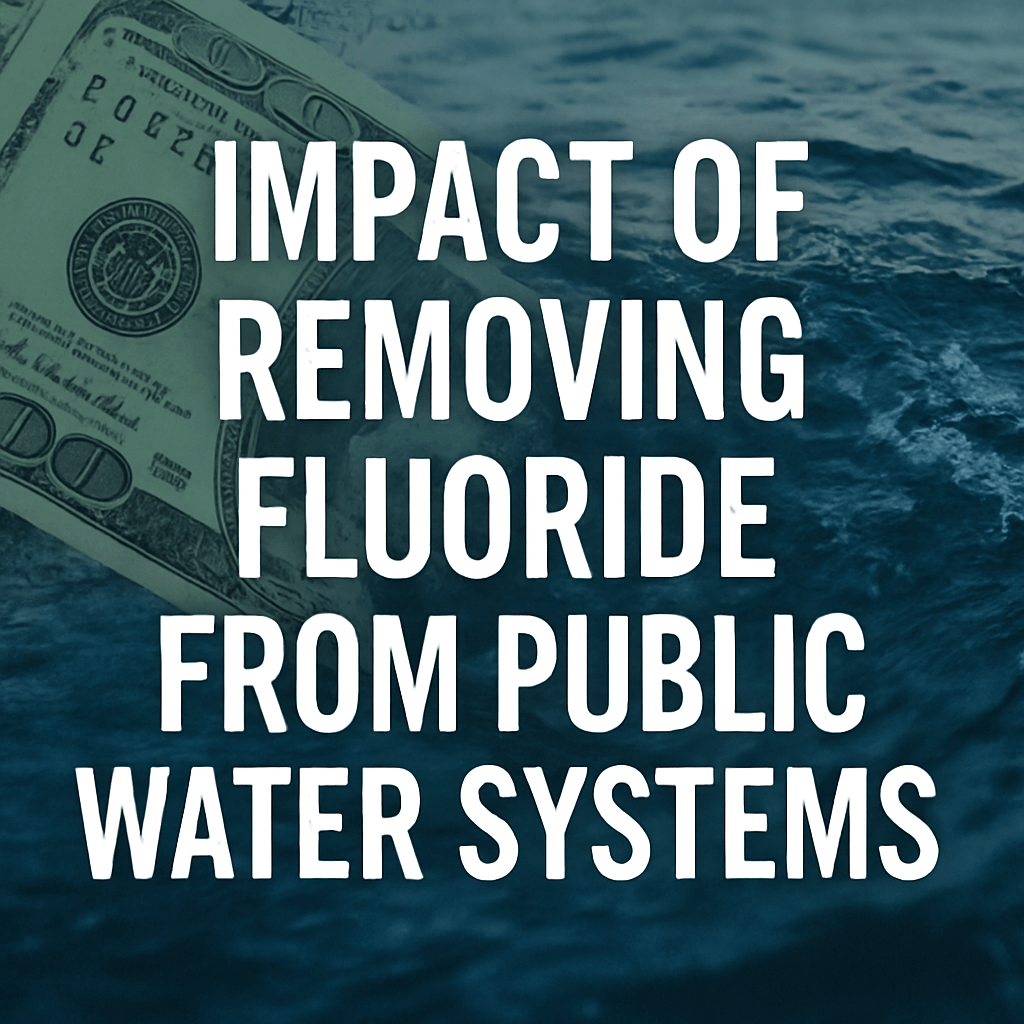Impact of Removing Fluoride from Public Water Systems

Since its introduction in Grand Rapids, Michigan, in 1945, the addition of fluoride to drinking water has widely been recognized as a major public health achievement of the 20th century, often cited by the Centers for Disease Control and Prevention (CDC) as one of the top ten breakthroughs in public health. Fluoride, a naturally occurring mineral, is added to tap water to mitigate the risk of tooth decay, an issue affecting millions across the United States.
Policy Shift and Recent Developments
Beginning in 2025, the U.S. government, under the leadership of Health and Human Services Secretary Robert F. Kennedy Jr., has proposed the phased removal of fluoride from public water supplies. This controversial stance has led states such as Utah and Florida to enact bans on the fluoridation of public water systems. The arguments against water fluoridation cite concerns regarding the method of delivery and potential health risks.
New Findings from JAMA Health Forum
On Friday, a new study published in the JAMA Health Forum projected the ramifications of a nationwide ban on fluoride in water. Researchers estimate that if fluoride were to be removed from public water systems, an additional 25.4 million cases of tooth decay could be expected over five years, representing a 7.5% increase. Furthermore, the associated healthcare costs are projected to reach approximately $9.8 billion. This projection is viewed by the authors as a best-case scenario.
“Our microsimulation suggested that removing fluoride would lead to an increase in dental caries, thereby elevating costs related to healthcare and diminishing quality of life,” stated Dr. Sung Eun Choi of Harvard Medical School, and Dr. Lisa Simon from Brigham and Women’s Hospital.
Impact on Vulnerable Populations
The study highlights that the adverse effects of fluoride removal would disproportionately impact children, particularly those who are publicly insured or uninsured and already face significant barriers to dental care. “Children from families with lower income or those living in rural areas benefit the most from fluoridation, as they have limited access to professional dental services,” noted Choi and Simon.
Methodology of the Study
The researchers conducted a microsimulation using a nationally representative sample of 10,000 U.S. children, analyzing variables such as costs, quality-adjusted life years (QALYs), and instances of dental caries. This involved accounting for differences in demographics, risk factors, and access to dental care in communities with varying levels of fluoride in their water supplies.
Fluoride: The Science and Controversy
Fluoride is a naturally occurring ion of fluorine, found in trace amounts in various natural sources, including soil and certain foods like shellfish and yogurt. Its utilization in public health initiatives has been endorsed since 1962 by the U.S. Public Health Service, although decisions on fluoridation are made locally rather than federally regulated.
The debate surrounding fluoride’s safety has intensified, particularly following a contentious January 2023 meta-analysis published in JAMA Pediatrics, which suggested a correlation between elevated fluoride levels and lower IQ scores in children. This assertion has created a divide among experts, with the journal publishing opposing editorials—one advocating for a re-evaluation of fluoride’s risks and the other highlighting significant methodological flaws in the study.
Conclusion of the Latest Study
The findings from the recent study indicate that eliminating fluoride from public water systems would not only lead to increased incidences of dental decay but also significantly increase healthcare costs for society. “Our analysis strongly suggests that the advantages of fluoridating water, as recommended by agencies like the Environmental Protection Agency and CDC, far outweigh concerns regarding its safety when consumed at levels deemed appropriate,” the authors concluded.
Further Explorations in Public Health
- Environmental Considerations: Evaluating the ecological impact of fluoride waste products and their effects on local water supplies.
- Global Perspectives: How other countries manage fluoride in drinking water and lessons learned from their experiences.
- Public Perception and Policy: Analyzing how public campaigns against fluoridation have gained traction and their implications for health policy.
As discussions around fluoride continue to evolve, monitoring these developments will be vital for stakeholders across the healthcare spectrum.
Source: fortune